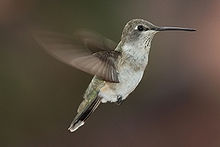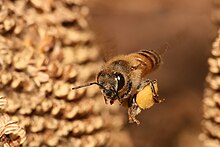
Hi Everybody!!
On this day, for the hummingbirds I put on my "mopping music" which is a country western station. They really seemed to enjoy it as they were feeder hopping and bee dodging! They have quite an obstacle course just to eat. A song by Miley Cyrus came on: "Hoedown Throwdown" and the birds seemed to be square dancing and hip-hopping all around the feeders! Of course, I captured it for You in the following 5 new photostudy albums! Turn the music up as You view the slideshows-Be part of this Hummingbird Hoedown Happening!
https://en.wikipedia.org/wiki/Hummingbird
Hummingbird
From Wikipedia, the free encyclopedia
| Hummingbird | |
|---|---|
 | |
| Female Black-chinned Hummingbird | |
| Scientific classification | |
| Kingdom: | Animalia |
| Phylum: | Chordata |
| Class: | Aves |
| Subclass: | Neornithes |
| Infraclass: | Neognathae |
| (unranked): | Cypselomorphae |
| Order: | Apodiformes |
| Family: | Trochilidae Vigors, 1825 |

| This is a featured picture, which means that members of the community have identified it as one of the finest images on the English Wikipedia, adding significantly to its accompanying article. If you have a different image of similar quality, be sure to upload it using the proper free license tag, add it to a relevant article, and nominate it. |
| This image was selected as picture of the day on the English Wikipedia for February 15, 2012. |
| Description |
Calliope Hummingbird / Stellula calliope - female feeding two chicks
|
| Date | |
| Source | self-made / http://www.pbase.com/wwcsig/image/86468128 |
| Author | Wolfgang Wander, Papa Lima Whiskey (edit) |
Licensing:[edit]
|
*****Your photostudies are now located in my G+Photo Albums (with slide show option). Tonight, there are 5 new albums (9-15 and 9-16), and below are the 5 links! Click on the link to go to the photostudy:
link1:
https://plus.google.com/photos/117645114459863049265/albums/5930706774665334993

link 2:
https://plus.google.com/photos/117645114459863049265/albums/5930709078841774705

link 3:
https://plus.google.com/photos/117645114459863049265/albums/5930711430579825681

link 4:
https://plus.google.com/photos/117645114459863049265/albums/5930965680285904961

link 5:
https://plus.google.com/photos/117645114459863049265/albums/5930968509604607169

https://en.wikipedia.org/wiki/Honey_bee
Honey bee
From Wikipedia, the free encyclopedia
| Honey bees Temporal range: Oligocene–Recent | |
|---|---|
 | |
| European honey bee carrying nectar back to the hive, with pollen attached | |
| Scientific classification | |
| Kingdom: | Animalia |
| Phylum: | Arthropoda |
| Class: | Insecta |
| Order: | Hymenoptera |
| Family: | Apidae |
| Subfamily: | Apinae |
| Tribe: | Apini Latreille, 1802 |
| Genus: | Apis Linnaeus, 1758 |
*New feature in Google Search Index:
- In-depth articles
The Secret Life of Bees
In his right hand, Seeley held a branch with a lapel microphone taped to the end. He was recording the honeybee swarm huddling inches away on a board nailed to the top of ...Apis mellifera
Insights into social insects from the genome of the honeybee Apis mellifera. Overall project leadership:, George M. Weinstock1,2, Gene E. Robinson7,9,13,14, Principal ...The Plight of the Honeybee
The European Union (EU) has announced that it will ban, for two years, the use of neonicotinoids, the much-maligned pesticide group often fingered inhoneybee declines.
Thanks to G+AutoBackUp for creating the awesome highlights of these new albums!



...this is brendasue signing off from Rainbow Creek. See You next time!
(Soon they will be gone, so enjoy today!)

O+O



No comments:
Post a Comment
Hi Everybody! Please say hello and follow so I know you are here! Due to the inconsideration of people trying to put commercials on my blog comment area, I have restricted use of anonymous posts. Sorry that some hurt all.
My public email is katescabin@gmail.com No spammers or trolls